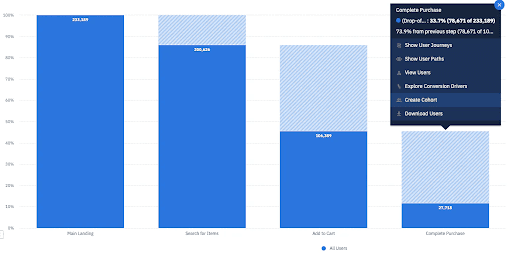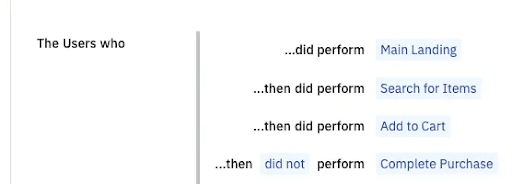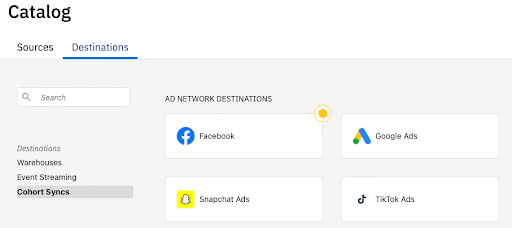Behavioral Segmentation: Benefits, Types, and Real-World Examples
Learn how this powerful approach enables you to better understand customers and unlock personalization.
Behavioral segmentation categorizes consumers based on their actions, such as purchase behaviors, product usage, and online engagement. Though traditional segmentation methods like demographic and geographic segmentation give you a general snapshot of an audience, they don’t reliably predict people’s wants or needs.
Behavioral segmentation, on the other hand, delves deeper. It offers insights into the motivations behind purchases, loyalty levels, and customer preferences. Better understanding your customers’ behaviors enables you to tailor your messages and offerings to match what they seek, making your marketing efforts more effective.
Key takeaways
- Behavioral segmentation offers dynamic insight into customer preferences and actions, going beyond the static information provided by demographic and geographic segmentation.
- Analyzing purchase patterns, product usage, and online interactions can help you create highly personalized, targeted marketing strategies.
- By aligning offers with customer needs, behavioral segmentation can significantly improve marketing efficiency, conversion rates, and customer loyalty.
- This approach enables you to identify high-value customer segments and allocate marketing resources more effectively, maximizing ROI.
- Behavioral segmentation enhances your customer experience by delivering relevant content and offers at each stage of the customer journey, from awareness to loyalty.
What is behavioral segmentation?
Behavioral segmentation is a type of market segmentation in which target audiences are categorized based on their actions. Behavioral market segmentation splits customers by behaviors such as on-page and CTA clicks, content sharing on social media, cart abandonment, and purchasing behavior. Analyzing these behaviors empowers you with insightful behavioral data on customer preferences and values so you can create more effective and personalized marketing strategies.
Here’s an example of behavioral segmentation in action. The funnel analysis below shows the customer journey for an ecommerce app, from landing on the main web page to completing a purchase.

You can use behavioral segmentation to build a segment (or cohort) for users who didn't complete a purchase.

You can then sync that segment to a downstream destination, like Facebook ads, to send personalized advertising to help them convert.

Why is behavioral segmentation important?
Behavioral segmentation enables you to tailor your experience based on what different customers want and need—helping your business’ bottom line.
More efficient resource allocation
Mass campaigns that send the same message to everyone in your audience are a waste of marketing resources. In contrast, with behavioral segmentation, you can share specific offers or messages with the people most likely to be interested in that offer and most likely to convert.
Additionally, you can segment based on the types of customers you expect will have the highest customer lifetime value. Focusing your marketing efforts and resources on acquiring and retaining that high-value segment increases your marketing operations efficiency.
Improved conversion and retention
Imagine you run a sports equipment ecommerce store, and you send a campaign about your new line of surfboards. Only 5% of the people you send the campaign to convert and buy the gear because most of them are interested in yoga and running, not surfing.
Next time, segment your audience and send the campaign only to those customers who have previously demonstrated interest in surfing or have bought water sports equipment. That way, you don’t waste resources on sending the campaign to people uninterested in the products, and your conversion rate will increase.
Analysts at Forrester found that customers are generally more receptive to personalization in the post-purchase stages. You can engage customers and promote long-term retention by sharing relevant and personalized messages with them after they purchase or sign up for your service.
At Amplitude, for example, we share relevant educational materials with customers to help them get the most out of the Amplitude platform based on the features they use after they sign up.
Six main types of behavioral segmentation
Behavioral segmentation involves grouping customers based on different behavioral variables. Below are six behavioral segmentation types commonly used to illuminate customers' journeys.
1. Purchases
A common behavioral segmentation example involves studying different customer behavior patterns before they make a purchase, including identifying any obstacles and incentives throughout the process. Grouping customers based on who did or didn’t purchase your product (or, in the case of a subscription service, upgraded tiers) and comparing their journeys can help you understand more about what customers are looking for during the buying process.
Some customers leave an item in their cart for over a day before purchasing. Others might only purchase during sales and discount periods. Purchase segmentations help reveal such patterns as:
- The number and type of interactions a visitor has with your business before converting into a customer
- The search terms a customer typically uses before coming across your product or service
- The types of questions a prospective customer asks customer care or chatbots before deciding to make a purchase
This information enables you to make changes across customer touchpoints to increase their likelihood of purchasing. For example, if customers seek social proof before buying your product, making reviews visible on your product page might help them click “buy.”
Segmenting customers based on purchase behaviors also enables you to send targeted messages—such as abandoned cart emails, to re-engage those who leave your site without completing a purchase.
2. Product usage
Monitoring customer product usage can help you identify heavy and power users who purchase more often and at higher values. This is particularly useful for SaaS products because customers use your product on a regular and ongoing basis. Segmenting and targeting these customers is usually good for business—you know your power customers are happy with your products, so you can focus your efforts on upselling or cross-selling to them.
But there’s no need to stop there. It’s helpful to know your light and medium users, too. With more personalized marketing efforts, you could convert a sizable customer base of light users into medium users.
3. Occasion and timing
This type of segmentation reveals when specific customers are most likely to purchase. These could be for special occasions or, with some products, certain times of the day, week, or month.
Occasion-based purchases could happen on national holidays and during holidays like Valentine’s Day, Halloween, or Christmas. Many customers may only purchase gifts for birthdays, Christmas, or Valentine’s Day events.
Timing-based purchases could be linked to rituals, such as customers who order meals from delivery apps for workplace lunches. By segmenting these users, you could send notifications just before lunchtime—when they’re deciding whether to order or head to the workplace cafeteria—to encourage them to order their meal.
4. Desired benefits
You create products because you believe they will be valuable to your customers. Your product likely delivers various customer benefits, and different segments might be more interested in some than others.
In the case of a productivity app, some customers may use it to organize their work at a nine-to-five job, others might be freelancers, and another customer segment may use it to manage their personal lives by creating shopping lists and holiday plans.
Grouping customers based on their desired benefits could help you target them more effectively. The productivity app, for example, could share project management resources with freelancers and save their meal planning templates for personal use customers.
5. Loyalty and satisfaction
Loyal customers are the keystone of any successful business. These customers buy regularly and help bring in new customers through referrals and word of mouth.
Metrics such as purchase frequency, average purchase or order value, and subscriptions to reward programs all measure customer loyalty. Understanding why customers are loyal is vital to creating conditions that will boost loyalty among all customers.
Loyalty-based segmentation is critical to understanding users, including:
- What behaviors lead to loyalty
- Which customers are most likely to become loyal
- What factors have helped retain loyal customers
- How to maximize the value of loyal customers
You can also segment customers by their satisfaction level, typically measured by a net promoter score (NPS). You can encourage happy, satisfied customers to leave reviews or recommend your company to their friends. You can also direct customers with low NPS scores to customer support resources.
6. Customer journey stage
Segmenting by customer journey stage enables tailored marketing approaches that align with the customer’s current phase. For example, in the awareness stage, customers are discovering their needs, so growing brand awareness and introducing your brand through educational content is vital. In contrast, as they enter the consideration state and evaluate their options, sharing messaging that highlights your benefits and differentiates you from competitors makes more sense.
Real-world examples of behavioral segmentation
ACKO
Insurance provider ACKO uses behavioral segmentation in their discounting campaigns. They wanted to increase sales revenue by getting more customers to buy their health insurance plan. Instead of sending a discount to anyone and everyone, they targeted the campaign by sharing the discount with their existing car insurance policyholders. As a result of the tailored campaign, they saw an increase in the number of visit-to-quote (V2Q) and quote-to-payment (Q2P) journeys.
Fender
Guitar manufacturer Fender—who also runs the Fender Play app to help people learn to play guitar—uses behavioral segmentation to drive acquisition and retention. The team segments customers based on their guitar skill level and the genres of songs they look at in the app. By tailoring their app experience and marketing messaging, they keep customers engaged with the Fender Play product.
ManoMano
DIY materials ecommerce brand ManoMano drives average order value by cross-selling to customers. They segmented customers based on their basket content and shared custom product recommendations for each segment. Initially, they manually created the recommendations by identifying products that made sense. However, they later developed machine learning algorithms to find suggestions based on past customer purchases. This approach means customers get all the products they need for the DIY project they’re working on, and ManoMano increases their profitability.
When to use behavioral segmentation
Behavioral segmentation is most useful when you want to understand the areas of strength and friction across all customer journey touchpoints. It’s a great way to uncover critical truths about the way customers engage with your product and answer questions like:
- What behaviors take people from prospective to new customers?
- Which email marketing messages have the highest conversion rates?
- How effective are loyalty programs at converting light users into heavy ones?
- What steps do heavy users take before completing a purchase?
- When do purchases spike, and how can you use those spikes to upsell more products?
- Who are your most loyal customers, and what would help retain them?
Behavioral segmentation also unlocks opportunities at every stage of the customer lifecycle. Use it to enhance your marketing strategies (including lifecycle marketing) and improve your user experience to drive customer engagement and retention.
Behavioral segmentation tools
Access to metrics and customer data is vital to behavioral segmentation. Manually collecting this data is tricky, time-consuming, and can result in limited information.
Segmentation software like Amplitude offers direct access to the data you need for behavioral segmentation. These tools can:
- Define dynamic audience segments: Gather information on customer behaviors, product data, and profile data, and automate building audience lists.
- Compute customer properties in real-time: Segment users based on behaviors or combinations of behaviors, such as average order value, subscription to rewards programs, and the last item viewed.
- Predict the best audience to target: Design targeted and personalized marketing campaigns. Send special offers to potential customers, campaigns to keep high lifetime value customers engaged and messaging to convert on-the-fence prospects into shoppers.
- Centralize and standardize audiences: Create automated syncs to any tool for groups of customers for reliability, consistency, and repeatability.
Segmentation tools utilize machine learning algorithms to boost process efficiency and optimize sales and marketing endeavors.
Behavioral vs. other types of marketing segmentation
Of course, behavioral segmentation isn’t the only kind of segmentation you can conduct. Let’s dive into the different ways you can categorize your audience.
Behavioral vs. demographic segmentation
Demographic segmentation splits customers into cohorts based on demographic data, including factors such as age, gender, level of education, and household income.
Demographic segmentation can help you price a product to fit demographic segments based on income, but it doesn’t say much about customers’ needs and pain points. Behavioral segmentation is more effective for observing customers’ interactions with your business—identifying loyal customers to reduce churn and increase customer satisfaction.
Behavioral vs. psychographic segmentation
Psychographic segmentation organizes your customer base according to the psychological traits that impact their interactions with your business, such as purchase decisions or brand loyalty.
Traits that companies usually base their psychographic segmentation on include:
- Personality
- Lifestyle
- Political beliefs
- Hobbies
The psychographic and behavioral segmentation strategies have different purposes. Psychographic segmentation offers insight into why customers choose based on their internal traits. Behavioral segmentation looks at things from the other end of the spectrum, analyzing how your product and customer journey stages impact customer choices.
Psychographic segmentation might link a lifestyle product, like hiking boots, to audiences with a taste for adventure. On the other hand, behavioral segmentation might present cross-selling opportunities for products, like tents, to customers who have already bought those hiking boots.
Behavioral vs. geographic segmentation
Geographic segmentation divides customers based on their physical location using information like zip code, state, time zone, language, city, and country. Different geographic locations tend to have different characteristics, and this type of segmentation enables businesses to tap into those insights.
The primary appeal of geographic segmentation is that it’s easy to implement. Since geographic information is usually readily available, you can reach potential customers relatively quickly using location-based marketing efforts.
However, geographical segmentation might not be relevant to all businesses. Some companies sell products or services that are not affected by location-specific nuances. This is particularly true of SaaS solutions like project management tools.
Getting started with behavioral segmentation
Behavioral segmentation offers a powerful way to personalize marketing and sales efforts, driving retention and revenue. Start your behavioral segmentation initiatives by signing up to Amplitude for free.

Carolyn Feibleman
Principal Product Manager, Amplitude
Carolyn Feibleman is a principal product manager at Amplitude, where she focuses on helping companies adopt digital analytics to build better products and experiences.
More from Carolyn





